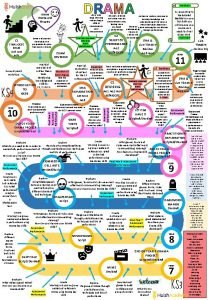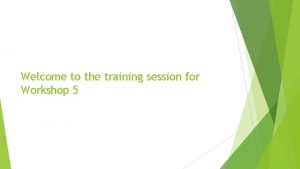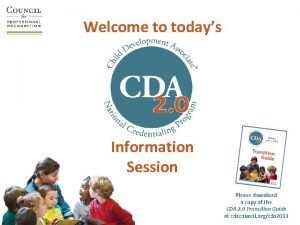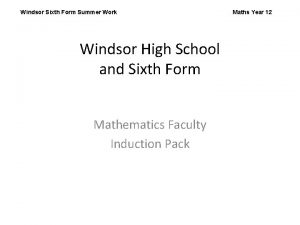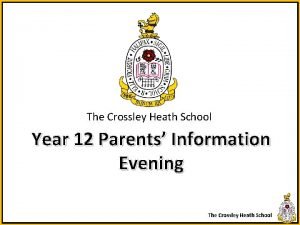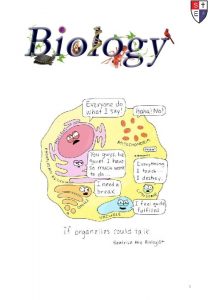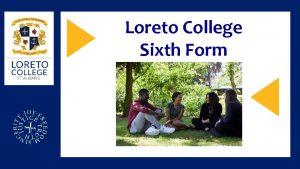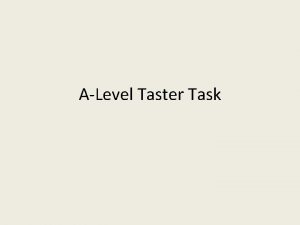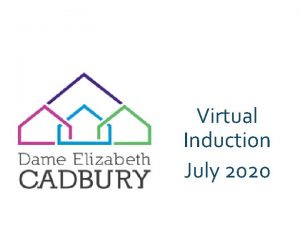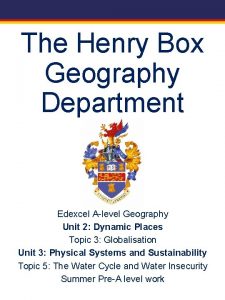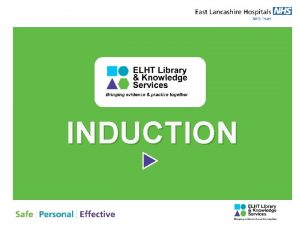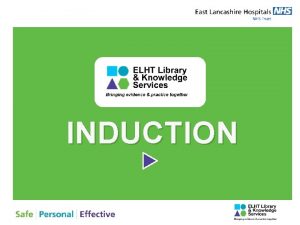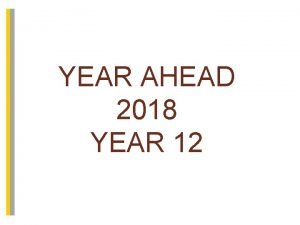ALevel Geography sixth form induction session Welcome to

























- Slides: 25

A-Level Geography sixth form induction session

Welcome to the Geography department at CCCS!

Investigative Geography Worth 60 marks- 20% of A Level Your task: Together we are going to plan and execute our own investigation around the school site. We are going to try and do this virtually from the comfort of our homes

What could you base your investigation on around the school site? Discuss: Think of topics you have studied in geography and how you could carry out research on a local/school scale, for example, GCSE coursework you have done, pupil perceptions of climate change? Flood risk at school? Peoples perceptions of services in Upminster? Investigating pollution around school?

What could we investigate? Geographical concepts - Identity - Causality - Sustainability - Resilience - Risk - Mitigation - Adaptation These are just a few…there are 15 we will consider in detail during ALevel geography lessons.

How does environmental quality vary across CCCS? What influences people’s perceptions of CCCS? To what extent does accessibility vary across the school?

Is the school site sustainable in the 21 st Century? What factors shape the identity of CCCS? Are some areas of the school more at risk of flooding than others?

Do the school facilities meet the needs of the school community? To what extent is CCCS a clone school? (Is it just like other schools? How does biodiversity vary across the school site?

Carrying out your investigation… Lets get started! Task: Using the A 3 fieldwork sheet and guidance sheet, we are going to design and undertake a virtual fieldwork investigation together. (Fill in your A 3 sheet/take notes as we go along)

Question: What factors shape the identity of CCCS? • Physical geography – e. g. altitude, slope angle, aspect, drainage, geology • Demography – e. g. number of inhabitants, their ages, ethnicity. • Cultural – e. g. religion, location traditions, local clubs and societies. • Built environment – e. g. Age and style of buildings, including building materials, density of buildings. Click on the image to link to a video which will take you on a virtual tour of CCCS where we will discuss some of these factors.

What sampling methods are you going to use? You need to find out the views of the jelly baby population on erosion of jelly bay coast… but there are 10, 000 jelly babies, how do you do it?

Why do scientists need to sample in reality? Sampling is the process of measuring a small number of sites or people in order to obtain a perspective on all sites and people. Why do geographers use sampling? • Sampling is quicker • Sampling is cheaper • Often it is impossible to access whole population A sample needs to be representative of the whole population. Representative means how closely the characteristics of the sample match the characteristics of the population An unrepresentative sample is biased. In a biased sample, some elements of the population are less likely to be included than others.

So what are the 3 types of sampling? Systematic sampling In a systematic sample, measurements are taken at regular intervals, e. g. • every 5 th person who walks past • every 20 metres along a street • every 50 metres along a beach What are the advantages and disadvantages of systematic sampling?

So what are the 3 types of sampling? Stratified Sampling 'Strata' means 'layer'. A stratified sample is made up of different 'layers' of the population, for example, selecting samples from different age groups. The sample size for each layer is proportional to the size of the 'layer'. This is shown in the following equation: Sample size for each layer = size of whole sample/size of population × size of layer

So what are the 3 types of sampling? Random sampling In a random sample, each member of the population is equally likely to be included in the sample. For taking random samples of an area, use a random number table to select numbers.

Primary: Student Questionnaire Methodology– What factors shape the identity of CCCS?

Methodology– What factors shape the identity of CCCS? Primary: Student Questionnaire Key themes from Q 6. • • Safe Community Everyone Friends Teachers Lifetime/forever. Help

Primary: Staff Questionnaire Methodology– What factors shape the identity of CCCS?

Primary: Staff Questionnaire Methodology– What factors shape the identity of CCCS? Key themes from Q 7. *Q 6 on student survey. • • • Safe Family Education Community Pupils/Students

Methodology– What factors shape the identity of CCCS? Secondary: Google Search Analysis Celebrating success – academic achievement of students. School crest – connections to the past – Historical and cultural. Sporting success – rugby dominates as well as team sports. Pupil centred – Demographic characteristics of school. Physical geography – large school field.

Methodology– What factors shape the identity of CCCS? Secondary: Google Search Analysis Key: Physical geography Demography (people) Cultural (traditions, history, religion) Built Environment 3 16 1 Coded Analysis of Google Image Search

Presenting your data… 15 minutes Based on the information you have been provided with, choose and appropriate way to present at least one piece of data.

Some Data Presentation suggestions… 15 minutes • Located bar chart – draw bars on map next to each site where data was collected • Choropleth map – shade map using graduated colour identified in a key • Isoline map – draw lines connecting points of equal value around the map • Line graphs • Scatter graphs for correlation

Conclusions & Evaluations Conclusions • • You will need to sum up in order to come to a decision about the task question To do this you will need to state the hypothesis again and then respond it in a logical way • It will need an element of crossreferencing to different methods and data • Finish with a clear, summary answer to your original task question Evaluations • This is where you review the entire investigation process. • Many pieces of fieldwork and research have limitations and errors, which can affect their findings. • Your Evaluation should comment on the reliability of your results – how sure are you that they are “true” and have not just happened by accident? • You will need to include a review of each stage of the process.

Summer task How has your local area changed over time? Coursework based on fieldwork will be worth 20% of the course. Therefore, to help you prepare for this, we would like you to complete a mini geographical fieldwork investigation based on the following title question: Title question - How has your local area changed over time?
 Inicum
Inicum The sixth sick sheik's sixth sheep's sick lyrics
The sixth sick sheik's sixth sheep's sick lyrics Edexcel alevel history
Edexcel alevel history Aqa alevel data sheet
Aqa alevel data sheet Drama alevel
Drama alevel Saira has a fear of cats
Saira has a fear of cats Welcome to new session 2020-21
Welcome to new session 2020-21 Welcome to the training session
Welcome to the training session Welcome to today's session
Welcome to today's session Ess
Ess Welcome to today's session
Welcome to today's session Nuast sixth form
Nuast sixth form Windsor sixth form
Windsor sixth form Walton high sixth form
Walton high sixth form Latymer sixth form
Latymer sixth form Crossley heath term dates
Crossley heath term dates Little heath open evening
Little heath open evening Holly smith
Holly smith Blackfen sixth form
Blackfen sixth form Barry 6th form
Barry 6th form Solihull sixth form tyber
Solihull sixth form tyber Bfs sixth form
Bfs sixth form Walton high sixth form entry requirements
Walton high sixth form entry requirements Walton sixth form
Walton sixth form Shenfield high school open evening
Shenfield high school open evening Winchmore sixth form open evening
Winchmore sixth form open evening




